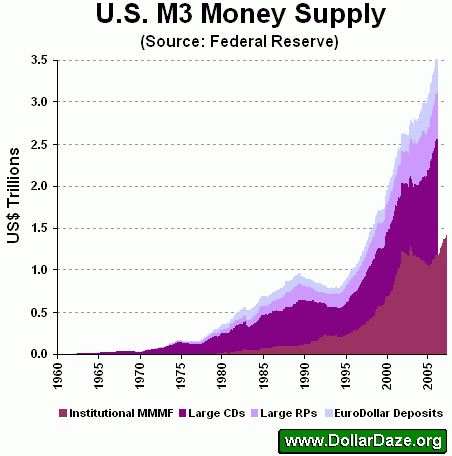Repealing the Law of Supply and Demand
When you flood the market with widgets, it drives the price of widgets down. That's Econ 101, the Law of Supply and Demand. The same principle says that when you try to borrow a ton of money all at once, you run out of people to borrow from, and have to pay a higher interest rate to get others to lend to you. Borrowing drives the interest rate up. It's basic economics.
Imagine if it worked the other way. Suppose you could keep making widgets until the cows come home, and use those widgets (somehow) to keep the price of widgets up. That would be quite an operation - a sure-fire ticket to riches. You would keep making more and more widgets, and the value of each widget would keep getting higher and higher.
Imagine if you could borrow money, and use some of the proceeds to buy yourself a lower interest rate for the next round of borrowing.
It's too bad economics doesn't work that way. You can't change the Law of Supply and Demand...or can you?
The Federal Reserve has printed more money in the last decade than for the entire previous 200 years put together. Yes, more money was created between 2003 and the present than for all time from 1776 until 2003. (The new name for this policy of printing money is "quantitative easing".) And yet, the value of the dollar is still high. The dollar has kept its value against gold, against the Euro and the Yen. Gold, in fact, is at a 5-year low price this spring. I got to wondering how the Federal Reserve has managed to keep the value of the dollar up, while printing more money than in all previous history.
In addition to the money being just printed, the Federal Government is also borrowing new money faster than at any time since World War II.
Econ 101 says that borrowing on this scale should push the interest rate up. In fact, when Nixon borrowed in the 1970s to pay for the war in Vietnam, interest rates began to rise, with short-term rates peaking at 16% in 1981. Last month, the rate on 1-year T-Bills fell to one eighth of one percent per year. That's 0.12%, the lowest it's been since before World War II.
What's happening?
The rest of this article is conjecture. Blame no one but me - this is my guess as to how this has come about. (I've bounced the guess off the most prominent economists who will answer my emails, and they sorta confirm that this is what they think as well.)
Detour: Derivatives
The Securities Market consists of stocks and bonds - shares of corporations and promises to pay money in the future. The Derivatives Market exists on the side, as a way for people to make bets on the future behavior of stocks and bonds, and a lot of other things as well, including the price of gold and the exchange rates among various world currencies. In the good old days, trading in the derivatives markets was overseen and regulated by the SEC. The price of the side-bets in the derivative markets followed the prices of stocks and bonds in the securities market. The securities markets were the dog and the derivative markets were the tail.
Beginning in the Reagan era and continuing through to the present in D and R administrations alike, a policy of deregulation has been pursued. The SEC no longer asserts effective control over the derivative markets. At the same time, the size of the derivative markets has mushroomed.
The result is that now the tail is wagging the dog. Instead of the primary markets leading the price of the derivatives, the derivative markets are pushing the primary markets around.
(Note: You can view every article as one long page if you sign up as an Advocate Member, or higher).






